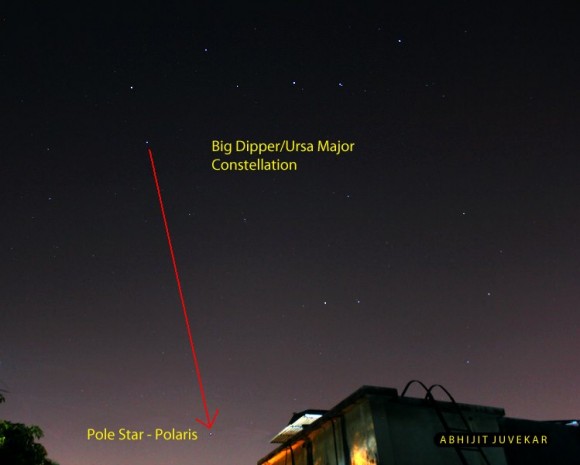
People learning to recognize the stars use star hopping to go from stars and constellations they know … to ones they don’t know yet. That is, they look for noticeable patterns on the sky’s dome, and find other patterns in relationship to the first one. One very easy pattern to find at this time of year is the magnificent constellation Orion the Hunter, now descending in the west after sunset. Orion is easy to find because it contains a very noticeable pattern of three medium-bright stars in a short straight row. These stars represent Orion’s Belt. If you can find Orion, you can use it to star hop to Sirius, the sky’s brightest star, in the constellation Canis Major.
As Earth revolves around the sun, both the constellation Orion and the star Sirius are about to disappear for awhile. They always drop into the sun’s glare at this time of year, as Earth’s motion brings the sun between us and them. So be sure to look for them soon after the sun goes down. And know that – as Earth continues to move in orbit around the sun – Orion and Sirius will return to our sky. We’ll see them next in the east before dawn, beginning around late July or early August.

View larger. | Another example of star hopping. The two outer stars in the bowl of the Big Dipper always point to Polaris, the North Star. Photo by EarthSky Facebook friend Abhijit Juvekar. Thank you, Abhijit!
Bottom line:
EarthSky astronomy kits are perfect for beginners. Order today from the EarthSky store
Donate: Your support means the world to us
from EarthSky https://ift.tt/3cRvBOr

People learning to recognize the stars use star hopping to go from stars and constellations they know … to ones they don’t know yet. That is, they look for noticeable patterns on the sky’s dome, and find other patterns in relationship to the first one. One very easy pattern to find at this time of year is the magnificent constellation Orion the Hunter, now descending in the west after sunset. Orion is easy to find because it contains a very noticeable pattern of three medium-bright stars in a short straight row. These stars represent Orion’s Belt. If you can find Orion, you can use it to star hop to Sirius, the sky’s brightest star, in the constellation Canis Major.
As Earth revolves around the sun, both the constellation Orion and the star Sirius are about to disappear for awhile. They always drop into the sun’s glare at this time of year, as Earth’s motion brings the sun between us and them. So be sure to look for them soon after the sun goes down. And know that – as Earth continues to move in orbit around the sun – Orion and Sirius will return to our sky. We’ll see them next in the east before dawn, beginning around late July or early August.

View larger. | Another example of star hopping. The two outer stars in the bowl of the Big Dipper always point to Polaris, the North Star. Photo by EarthSky Facebook friend Abhijit Juvekar. Thank you, Abhijit!
Bottom line:
EarthSky astronomy kits are perfect for beginners. Order today from the EarthSky store
Donate: Your support means the world to us
from EarthSky https://ift.tt/3cRvBOr

Aucun commentaire:
Enregistrer un commentaire